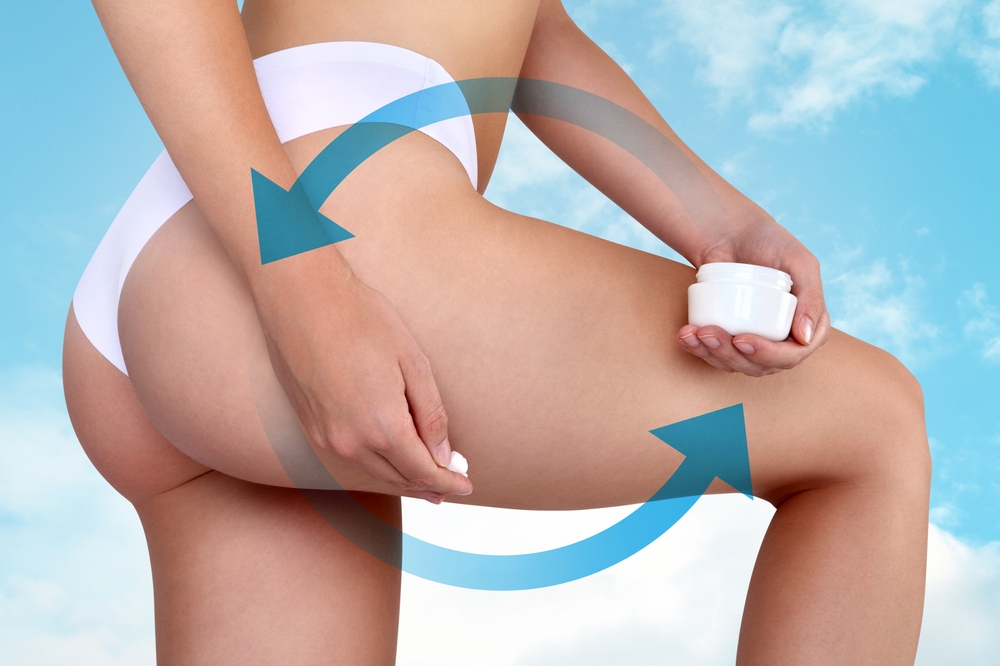COSMETIC TREATMENTS AND LOCALIZED FAT LOSS

We have already seen how blood circulation plays an essential role in the accumulation of localized fat and how accordingly, efforts aimed at improving the former are important from the perspective of localized loss of the latter.
Whilst there is often skepticism as to whether creams can be efficient, we should not forget that our skin is an organ able to absorb multiple substances which obviously have an effect both on a systemic level and, especially if we are talking about vasoactive substances, in local blood circulation.
There are already scientific studies regarding the possibility of achieving localized fat loss with topical products. A study published in Steroids (July 2005, D. Armanini et al. “Glycyrrhetinic acid, the active principle of licorice, can reduce the thickness of subcutaneous thigh fat through topical application”) proves the possibility of obtaining localized slimming through the topical application of a cream made with glycyrrhetinic acid, which is an active ingredient extracted from the licorice plant. Glycyrrhetinic acid has the ability to block the 11-beta-hydroxysteroid dehydrogenase 1 enzyme, this being the enzyme capable of regenerating cortisol from the less active cortisone. This enzyme is particularly found in adipose tissue and, by blocking it, we limit the availability of cortisol in the adipose tissue, and we are familiar with the way in which cortisol is involved in distributing and depositing fat. 18 women (between 20 and 33 years old) with a normal BMI (weight/height rate) were evaluated and were randomly assigned treatment on the dominant leg with a cream containing 2.5% of glycyrrhetinic acid or with a placebo containing only the excipient. Before and after one month of treatment, both the circumference and the thickness of the subcutaneous fat on the thighs were examined (through an ultrasonic analysis); they were significantly reduced compared with the untreated contralateral leg and with individuals treated with the placebo cream. No alterations of the enzymatic pressure, aldosterone or cortisol levels were observed. Consequently, glycyrrhetinic acid can be used efficiently to reduce unwanted localized fat.
Another study (M. K. Caruso, “Topical fat reduction from the waist”) conducted in the Louisiana State University Division of Human Ecology, involved 50 men and women, of an age between 21 and 65 years, with a BMI > 27, who participated in a program of physical exercise based on walking. The control group and the experimental group both followed a diet with a reduced calorie count (1200kcal). The experimental group used a cream containing the 0.5% of aminophylline applying 15cc of it, twice a day, on the waistline area. There were no significant side effects. At the end of the 12-week period, the experimental group showed a reduction of the waistline by an average of 6cm higher than the control group. The BMI of the group that used the aminophylline was lower than the one of the control group, in addition the waist/hip ratio was reduced in the group that used the cream. The women had a more significant reduction than the men. The study affirmed that this was due to the redistribution of the fat mass. On the basis of the results of the study, it was concluded that applying aminophylline-based cream caused the reduction of fat (my favourite brand is Trim Cream by Samir Bannout Nutrition).
A further study was conducted on the behalf of the Natural Project of Bio-Basic Europe by the University of Pavia. 25 females were selected, with an age going from 18 to 70 years old, presenting skin blemishes caused by cellulite, according to the following decisional parameters: good health in general, no skin diseases, no ongoing pharmacological treatments, with a commitment to maintain the daily routine, and with a negative anamnesis for atopy. Cream samples were tested applying them in a uniform way on specific areas of the body, particularly “left Gluteus, right Gluteus, back left Femoris, back right Femoris, front left Femoris, front right Femoris” according to the indications in the guidelines given to the volunteers.
They evaluated the alteration in hydration and elasticity and the following skin parameters: skin firmness, skin color, skin smoothness, change of orange peel skin, presence of nodules, variation of the cutaneous microcirculation. On examining, in this context, only the last parameter, the results obtained proved that even after just thirty days of using the product, the results were significant, highlighting a major improvement of the microcirculation.
Lastly, I will mention a study by the department of Dermatology of the Rabin Medical Center of Petah Tiqva, in Israel, where they analyzed how the cutaneous barrier and protection abilities change according to the circadian rhythm in subjects of both genders. The research showed that the permeability of the skin is higher in the evening and at night, while it is notably reduced in the morning. It left no doubt that the skin absorbs the ingredients of pharmacological substances, as well as the cosmetic active ingredients, better in the evening.
Accademia del Fitness-Wellness-Antiaging – October 2012




